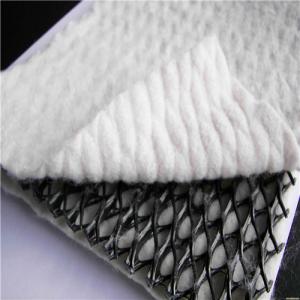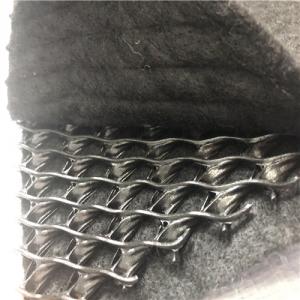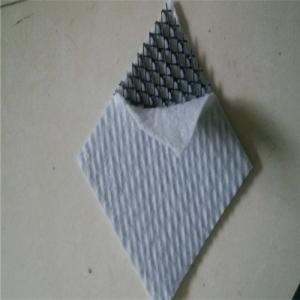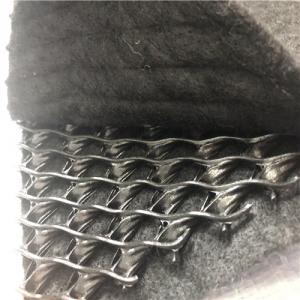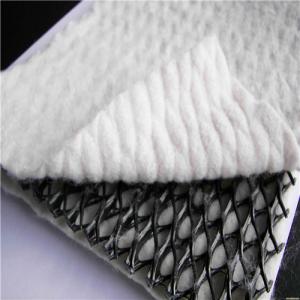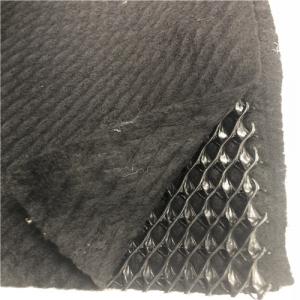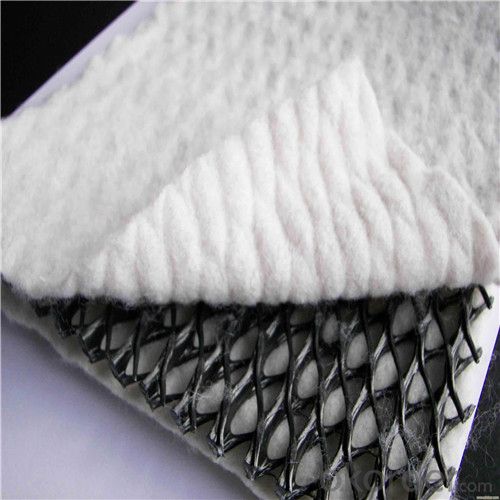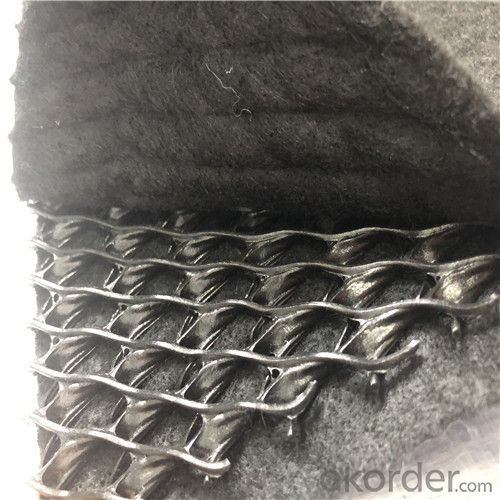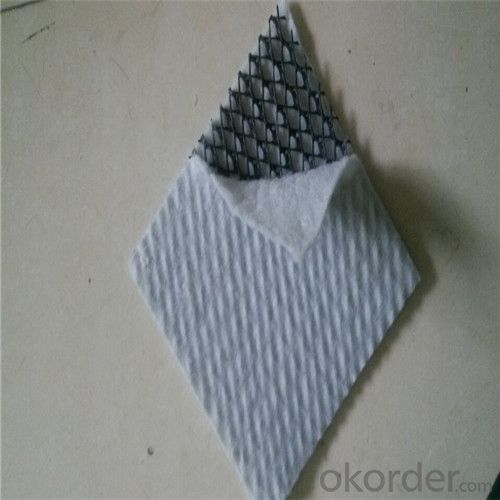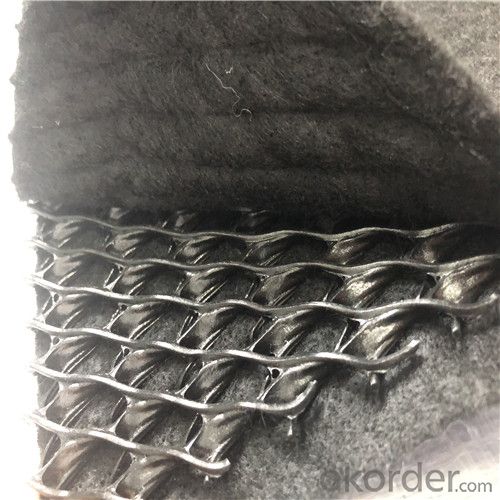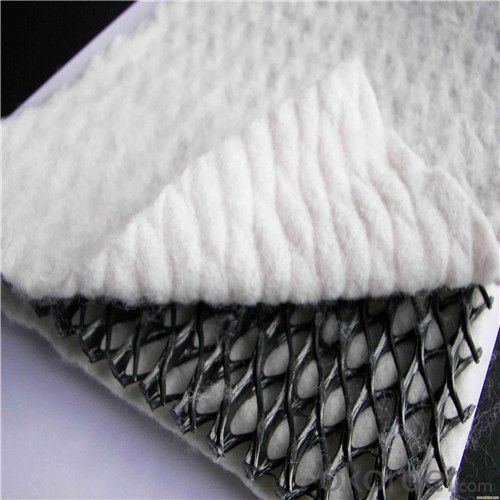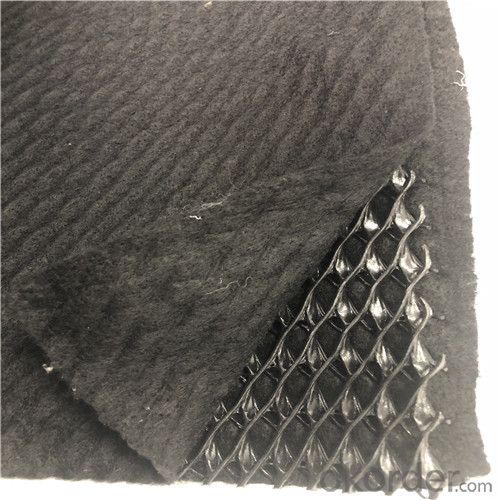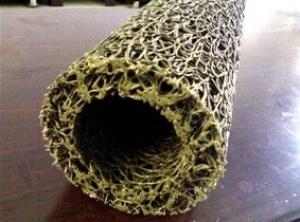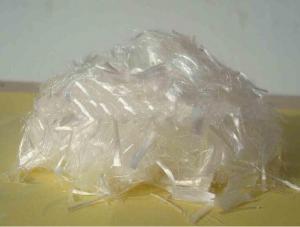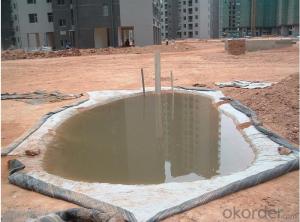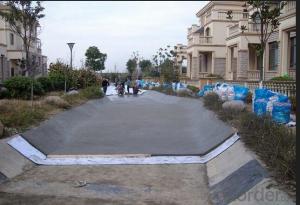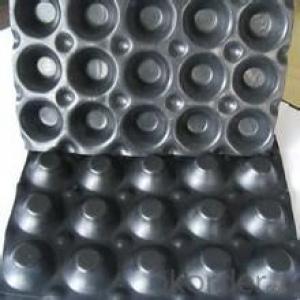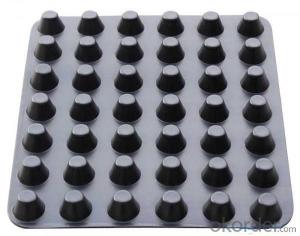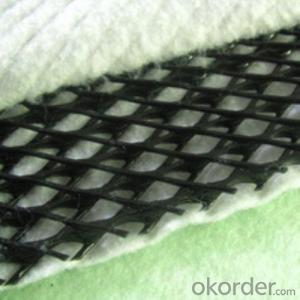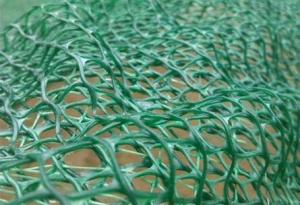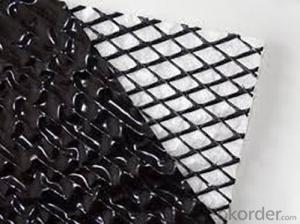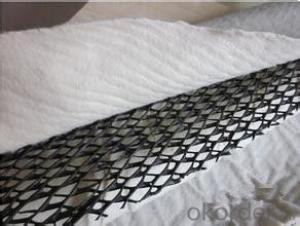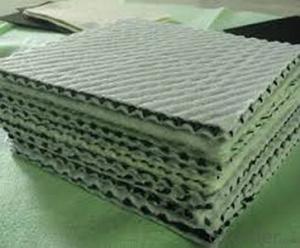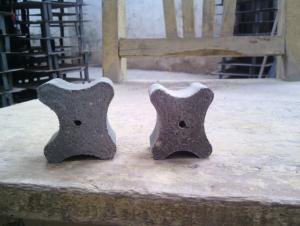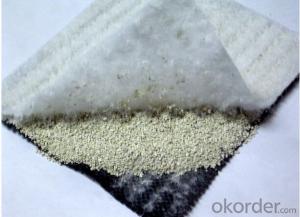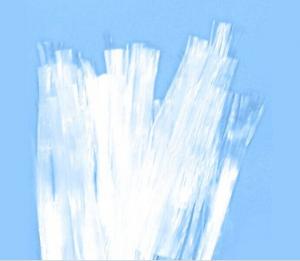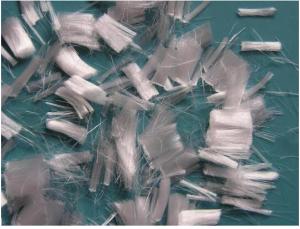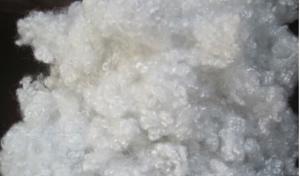HDPE Drainage Geonet used in Construction Earthwork
- Loading Port:
- China main port
- Payment Terms:
- TT or LC
- Min Order Qty:
- 1000 m²
- Supply Capability:
- 1000000 m²/month
OKorder Service Pledge
OKorder Financial Service
You Might Also Like
Composite Geonet Description:
Composite geonet is a new type drainage material. It has three layers: three-dimensional geonet and nonwoven geotextile on both sides.
The material of geonet is HDPE, and the material of geotextile can be needle punched PET/PP nonwoven geotextile, and thermalbonded continuous filament nonwoven geotextile.
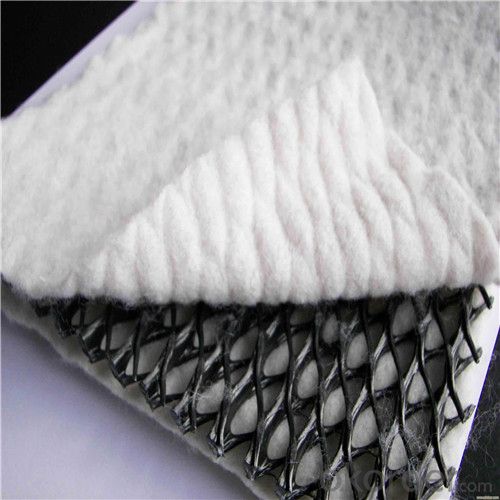
Composite Geonet Specification:
Thickness of geonet: 5mm to 8mm
Weight of geotextile: 200g/m2, as request
Width: 2m-4m
Length: as request
Composite Geonet Application:
Landfill drainage, roadbed and road drainage, railway drainage, tunnel drainage, underground
structure drainage, the retaining back wall
drainage, gardens and sports grounds drainage.
Our Service
1.On a regular basis or as per your request,we entrust national testing agencies to conduct quality inspections
2. Strictly in accordance with the ISO9001-2008 international quality system standard,we monitor and manage the whole process throughout production,quality testing,and measurement to ensure product quality
3. For quality-related construction delay or substandard construction(except for damage or losses due to customer’s responsibility or irresistible natural disasters),we have refunding,replacement,and repair services.We will respond to customers’ feedbacks on quality issues within 24 hours.
4.In order to provide customers with comprehensive technical support,we will provide technical and other related information upon request in a timely manner.
5.In required,we will appoint specialized technicians to the construction site to give technical trainings to construction people,and offer technical guidance throughout the whole construction process.
6.For damage due to shipment and delivery,after we receive the complaint,we will check the issure through provided pictures and videos.If our responsibility is confirmed,we wil offer free replacement.
7.When the construction is completed,as your request,our technical staff may participate in the final acceptance.
FAQ:
Q: What kind of payments does jenor support?
A: T/T, L/C, Cash are accepted.
Q: Do you charge for the samples?
A: Accordeing to our company policy, the samples are free, we only charge the freight fee. And we will return the freight fee during the next order.
Q: Can you produce according to customers' design?
A: Sure, we are professional manufacturer, OEM and ODM are both welcome.
- Q: What is the purpose of using geotextile tubes in shoreline stabilization projects?
- The purpose of using geotextile tubes in shoreline stabilization projects is to provide erosion control and protect the shoreline from wave action. These tubes act as a barrier, trapping sediment and creating a stable base for vegetation to grow, ultimately helping to prevent further shoreline erosion.
- Q: What are the different types of geocomposites used in earthwork?
- There are several types of geocomposites used in earthwork, including geotextile-geogrid composites, geotextile-geocell composites, and geotextile-drainage composites. These geocomposites are designed to provide reinforcement, stabilization, and drainage capabilities, depending on the specific needs of the earthwork project.
- Q: Are earthwork products suitable for constructing garden walls?
- Yes, earthwork products are suitable for constructing garden walls. Earthwork products, such as bricks, stones, or concrete blocks, provide durability and stability necessary for building garden walls. They can be easily shaped, stacked, or arranged to create a functional and aesthetically pleasing garden wall. Additionally, earthwork products offer various design options, allowing homeowners to customize the appearance of their garden walls to match their desired style.
- Q: Can geocells be used for load support in parking areas?
- Yes, geocells can be used for load support in parking areas. Geocells are a type of cellular confinement system that consists of interconnected cells filled with aggregate materials. When installed in parking areas, geocells provide stability and reinforcement to the ground, distributing the load of vehicles and preventing soil erosion. This makes geocells an effective solution for load support in parking areas, improving the overall durability and longevity of the pavement.
- Q: How are geosynthetics used in drainage systems?
- Geosynthetics are used in drainage systems to enhance their performance and longevity. They can be used as filtration layers, providing a barrier against soil particles while allowing water to pass through freely. Geosynthetics can also act as reinforcement, strengthening the soil and preventing erosion. Additionally, they can serve as separation layers, preventing the mixing of different soil layers and maintaining the integrity of the drainage system. Overall, geosynthetics play a crucial role in improving the efficiency and durability of drainage systems.
- Q: How can geogrids be used in road construction projects?
- Geogrids can be used in road construction projects by providing reinforcement and stabilization to the soil and aggregate layers, reducing the potential for settlement and rutting. They are typically placed between different layers of the road, such as subgrade and base courses, to improve the overall strength and durability of the pavement. Additionally, geogrids can help distribute the loads more evenly, enhance the load-bearing capacity, and extend the lifespan of the road.
- Q: What are the benefits of using geogrids in reinforced soil structures?
- Using geogrids in reinforced soil structures offers several benefits. Firstly, geogrids enhance the stability and strength of the structure by providing tensile reinforcement. This allows for the construction of taller and steeper slopes, reducing the need for extensive excavation or costly retaining walls. Secondly, geogrids distribute the load more evenly across the reinforced soil, reducing the stress on individual soil particles. This helps prevent settlement and deformation, leading to improved long-term performance and durability of the structure. Additionally, geogrids can improve the overall constructability and cost-effectiveness of reinforced soil structures. They are lightweight, easy to handle, and can be installed quickly, saving time and labor costs. Moreover, geogrids are typically made from durable materials that are resistant to biological degradation and chemical exposure, ensuring a longer service life for the structure. In summary, geogrids provide increased stability, load distribution, and constructability, making them a valuable component in reinforced soil structures.
- Q: Can earthwork products be used in wildlife habitat restoration?
- Yes, earthwork products can be used in wildlife habitat restoration. These products, such as soil, gravel, and stones, can be strategically utilized to create or enhance various elements of wildlife habitats, such as ponds, wetlands, and land contours. Earthwork products can help provide suitable environments for different species, support biodiversity, and restore natural ecosystems.
- Q: Are earthwork products suitable for underground stormwater storage?
- Yes, earthwork products such as geosynthetic materials, geotextiles, and geogrids are commonly used for underground stormwater storage systems. These products provide excellent drainage capabilities, stability, and soil reinforcement, making them suitable for storing stormwater underground. Additionally, they are cost-effective and environmentally friendly solutions for managing stormwater runoff.
- Q: What are the advantages of using geosynthetic materials in road subgrade stabilization?
- There are several advantages of using geosynthetic materials in road subgrade stabilization. Firstly, geosynthetics such as geotextiles or geogrids improve the strength and stability of the subgrade, enhancing the overall structural integrity of the road. These materials distribute loads more evenly, reducing differential settlement and preventing the formation of cracks and potholes. Secondly, geosynthetics act as a barrier, preventing the mixing of subgrade soil with the overlying base and pavement layers. This separation helps to maintain the intended properties of each layer, prolonging the road's lifespan. Additionally, geosynthetics offer effective drainage properties, improving water flow and preventing moisture accumulation within the subgrade. This reduces the risk of frost heave and other moisture-related damage. Overall, the use of geosynthetic materials in road subgrade stabilization leads to cost savings in maintenance and repairs, increased durability, and enhanced performance of the road infrastructure.
Send your message to us
HDPE Drainage Geonet used in Construction Earthwork
- Loading Port:
- China main port
- Payment Terms:
- TT or LC
- Min Order Qty:
- 1000 m²
- Supply Capability:
- 1000000 m²/month
OKorder Service Pledge
OKorder Financial Service
Similar products
Hot products
Hot Searches
Related keywords
